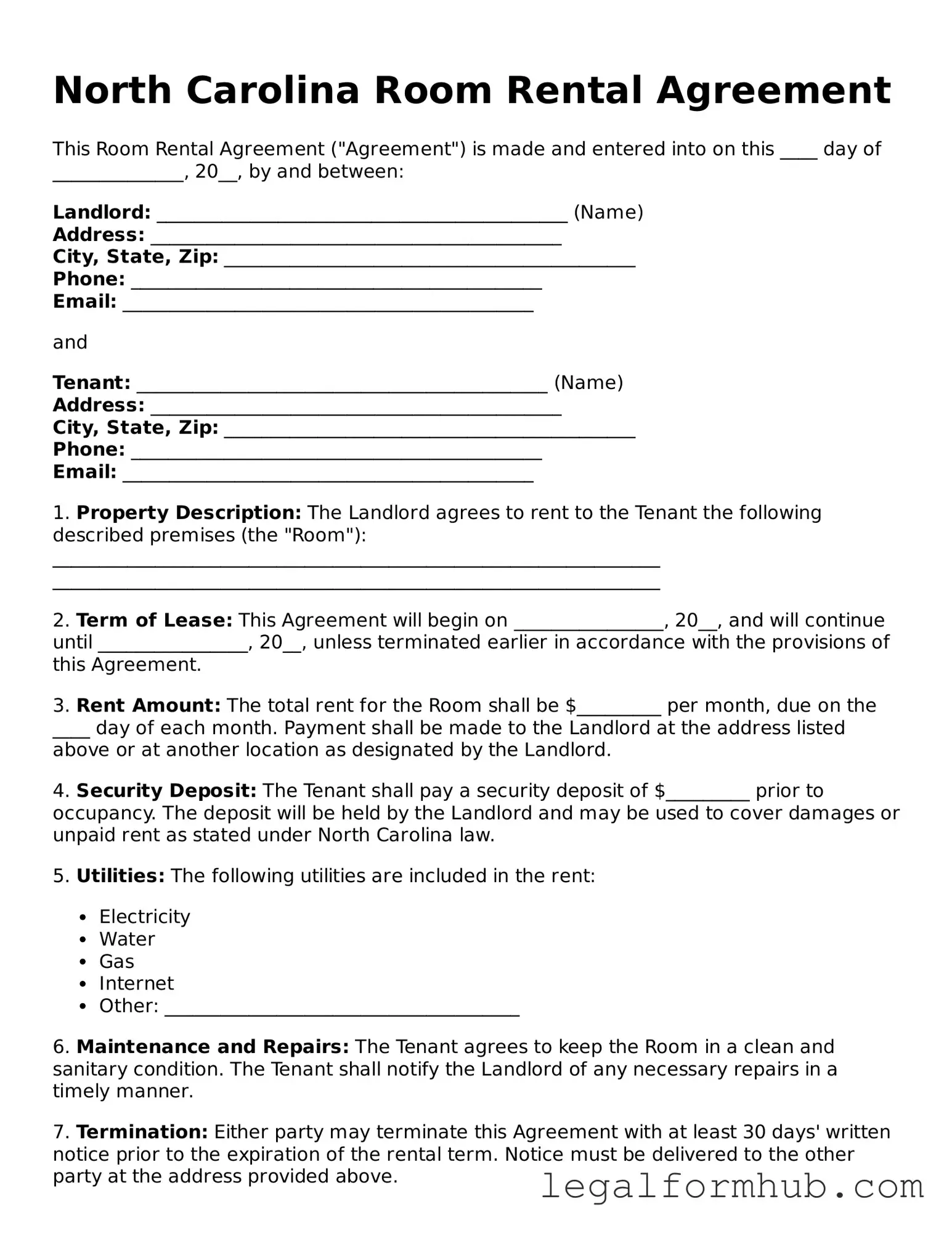The North Carolina Room Rental Agreement is similar to the standard Lease Agreement. Both documents outline the terms under which a tenant can occupy a property, including the duration of the stay, payment terms, and responsibilities of both parties. The Lease Agreement typically covers longer durations, while the Room Rental Agreement is often used for shorter stays, such as by the week or month.
Another document comparable to the Room Rental Agreement is the Sublease Agreement. This document allows a tenant to rent out their leased space to another person. Like the Room Rental Agreement, it details the terms of occupancy, payment, and responsibilities. However, the Sublease Agreement is usually initiated by an existing tenant rather than a property owner.
The Rental Application is another related document. While the Room Rental Agreement formalizes the rental terms, the Rental Application collects information from potential tenants. This document typically includes personal details, rental history, and references. Landlords use this information to assess the suitability of applicants before entering into a Room Rental Agreement.
The Move-In Checklist also bears similarities to the Room Rental Agreement. This document is often completed at the start of a rental period and details the condition of the property. It helps both the landlord and tenant understand the state of the room at the time of move-in, which can be important for resolving disputes later.
The House Rules document is another important piece. It outlines the expectations and guidelines for behavior within the rental property. While the Room Rental Agreement focuses on financial and legal obligations, the House Rules cover day-to-day living aspects, ensuring a harmonious environment for all tenants.
In order to ensure confidentiality and legal protection when entering into rental agreements, parties may also consider utilizing a Non-disclosure Agreement, which can be crucial in maintaining privacy regarding sensitive information, as detailed in this resource: https://arizonapdfs.com/non-disclosure-agreement-template/.
The Security Deposit Agreement is closely related as well. This document specifies the amount of the security deposit, conditions for its return, and any deductions that may occur. It complements the Room Rental Agreement by providing clarity on financial protections for the landlord and tenant.
The Eviction Notice is a document that may come into play if the terms of the Room Rental Agreement are violated. It outlines the reasons for eviction and the required notice period. While the Room Rental Agreement establishes the rental terms, the Eviction Notice serves as a formal warning when those terms are not met.
Lastly, the Termination Notice is similar to the Room Rental Agreement in that it marks the end of the rental relationship. This document communicates the intent to end the agreement, specifying the required notice period and any final obligations. It ensures that both parties are clear on the timeline and expectations for concluding the rental arrangement.
